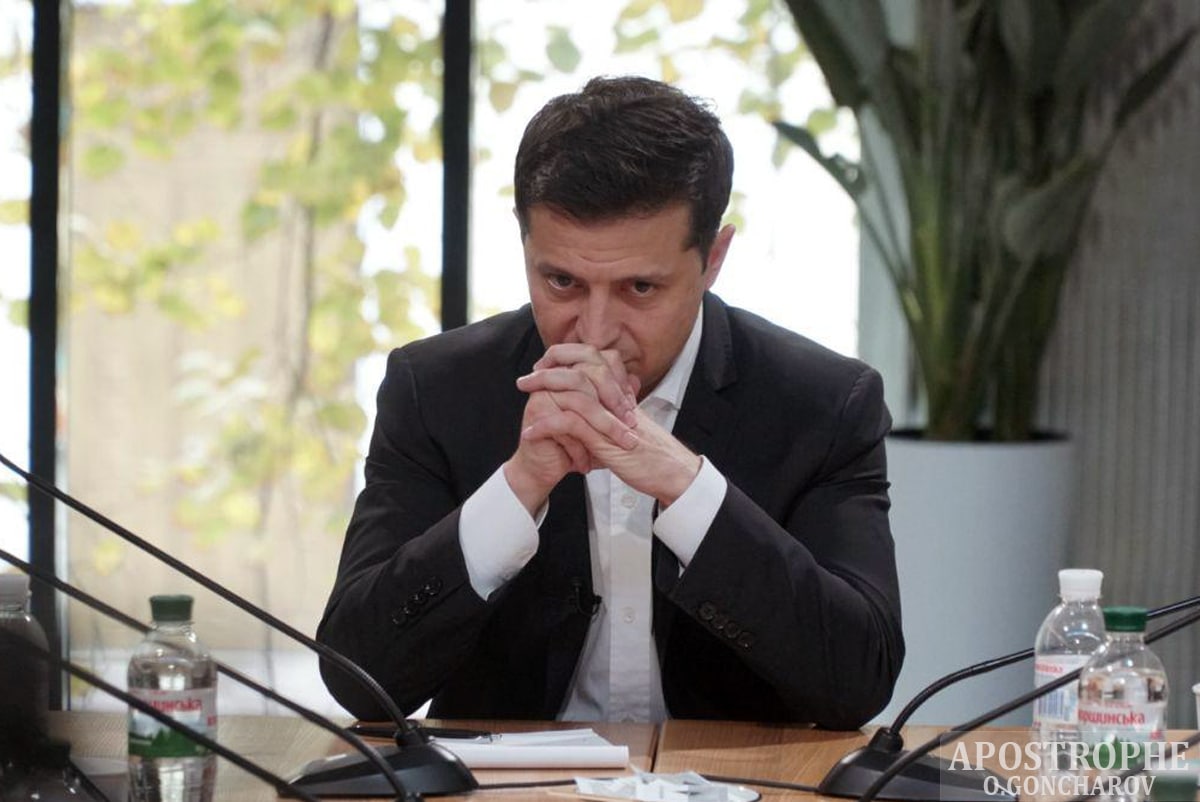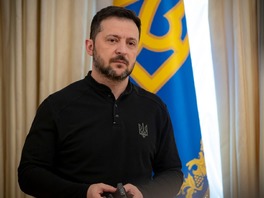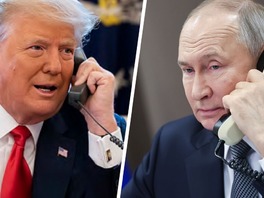In November 2021, Volodymyr Zelenskyy’s presidency has crossed the equator. With half of his term now gone, it is time to look at some intermediate results of the president’s foreign and security policy.
Many of Volodymyr Zelenskyy’s promises back in 2019 focused on improving Ukraine’s immediate environment, in particular by resolving the conflict in the Donbas and settling the disputes with countries like Hungary and Poland. The former required considerable efforts and a broad vision of how bilateral relations with Russia may look like in at least five years to come. A failure in resolving this task would have made it impossible to proceed on a host of other issues.
So far, Ukraine’s foreign policy seems to be deadlocked in its major directions. Key problems of Ukraine’s national security agenda have not been resolved, and only minor improvements in the international environment can be reported.
The country’s major security problem, the low-intensity military conflict in the Donbas, has not been addressed effectively. The President’s pre-election pledge of peace has not been fulfilled due to a complete lack of room for possible agreement with Russia. The attempts to establish a sustainable ceasefire turned to be ineffective. No progress in resolving the conflict based on the Minsk agreements is in sight.
Meanwhile, Russia’s foreign policy has gained momentum. With an open dialogue with the Biden administration in the U.S. and key capitals in Europe, the Kremlin is regaining the initiative. Its grasp on regional issues strengthens with growing influence over Belarus and a tougher approach to Ukraine. Moscow’s ‘red lines’ about Ukraine seem to be generally followed by the West; which means Ukraine has not become closer to EU and/or NATO membership in recent two and a half years.
Results of 2021
2021 has been a difficult year for Ukraine in terms of external challenges. The most serious of them have been coming from Russia.
There were at least two deep political-military crises, in spring and the fall, triggered by the growing concentration of Russian troops along the border with Ukraine. In addition to that, tensions on the contact line in Donbas have escalated. The ceasefire, established in 2020 with so much effort, has ended at the beginning of 2021. Since then, there has been no progress in negotiations, while the number of violations and shelling statistics have been on the rise. By the end of 2021, the conflict in the Donbas is far from the settlement, probably even further than it used to be before.
Russia has generally adopted a tougher Ukrainian policy. It seems like it no longer hopes to persuade president Zelenskyy into a more compromised approach to the Donbas and bilateral relations generally. Instead, the emphasis has shifted to military exercises, maneuvering, intimidation, and political pressure. Summits in the Normandy format have not been assembled for two years, and the channels of communication between Kyiv and Moscow also seem to have deteriorated.
At the same time, Moscow improved its international position due to rising demand for energy resources and a deepening confrontation between the U.S. and China. Russia is needed as a party to dialogue in Europe and the US, and the agenda for this dialogue is quite broad. Moscow managed to ease its diplomatic semi-isolation further and gained a chance to make its voice sound louder in European politics after the Nord Stream-2 pipeline becomes operational.
These gains of Russia at a global level have been hardly compensated by Ukraine in its relations with other major holders of influence: the US, the EU, and China.
2021 saw a certain rise in Ukrainian-American contacts at all levels. Two presidents met on the 31st of August in Washington, D.C. Secretary Blinken visited Kyiv back in May, and Minister Kuleba returned the visit in November, in particular for signing a revised version of the Charter on Strategic Partnership. But behind these talks and documents, there is a lack of vision and perspective. Ukraine’s policy remains for the US a secondary issue, the one dependent on its Russian policy. There has been no significant change in the American administration’s approach to supporting Ukraine compared to the previous year and a previous administration. At the same time, there is a modified strategy in Washington towards Russia, which resulted in two summits, one in person and another virtual, between presidents of the US and Russia this year. It focuses on a need to keep a dialogue with Moscow open and build cooperation in areas of mutual interest. That all seem to be bad news for Ukrainian foreign policy, which is relying too much on American support.
Relations with the EU are not flourishing either. The 23rd Ukraine-EU summit was held in October in Kyiv. Generally, the event was positively taken: EU’s top officials recognized Ukraine’s European aspirations, assessed the results of the implementation of the Association Agreement, and once again promised support for Ukraine. The Common Aviation Area agreement has been signed at the summit, as well as agreements on Ukraine’s participation in Horizon Europe and Creative Europe programs. Issues of energy security, although addressed by the parties at the summit, have not been resolved completely. Long-term consequences of the Nord Stream-2 project may have deep implications for the energy security landscape in Europe and Ukraine’s role in it.
At the same time, in 2021 Ukraine and the EU launched the process of assessment and revision of the Association Agreement, after the document has been in force for five years. Ukraine aims at enhancing cooperation as long as full membership is out of sight. The priorities of the Ukrainian government include strengthening sectoral cooperation and gradual integration of Ukraine into the EU’s internal markets.
Ukraine’s relations with Germany, one of the largest EU member-states, are also in a bad shape and have deteriorated in 2021. Berlin has been too often accused by Kyiv of abandoning Ukraine and getting back to ‘business as usual’ with Russia, in particular against the backdrop of the construction of the Nord Stream-2 pipeline, which is now close to completion. This approach is far from effective and is resulting only in continued alienation between the two countries. Ukraine demonstrates too little understanding of Germany’s interests and agenda; while demands from Kyiv often sound too loud and are too unrealistic. A new government in Berlin is believed to generally continue the policy towards Ukraine designed by Angela Merkel; however social democrats may after all adopt an even more pragmatic approach to dealing with Russia on the one hand and Ukraine’s problems on the other.
While China is increasing its global reach and, in particular, enhancing its influence in Ukraine’s neighborhood, Chinese-Ukrainian relations remain vague and filled with crises. Although in 2021 some Ukrainian politicians made compliments to the way the Communist Party of China runs the state, there is still very little understanding in Ukraine of how potential in bilateral relations could be used. China, a number one trading partner of Ukraine, is on a colliding course with the US, Ukraine’s number one strategic partner. That contradiction continues to affect relations between Kyiv and Beijing.
These difficulties have been added by another round of tensions over the purchase of the Motor-Sich company by a Chinese investor. The deal has been blocked by the Ukrainian government for security reasons, and the conflict continues in both political and legal dimensions.
A crisis in Belarus has been an important external factor for the whole year. As a result of the recent developments, the country has become more hostile towards Ukraine during 2021. On the one hand, Minsk’s approach has been influenced by a growing dependence on Russia: the two countries carried out another round of integration; held another major military exercise; and are generally united in the anti-Western endeavor. On the other hand, Ukraine’s response to a political crisis in Belarus, triggered by the presidential elections in 2020, has left official Minsk with little choice. The rhetoric of president Lukashenko became more aggressive, tensions on the Ukrainian-Belarusian border rose, and after nearly eight years the Belarusian president has been for the first time talking about recognizing Crimea as part of Russia.
In 2020 Ukraine’s foreign policy successes were mostly concentrated around relations with Turkey, the United Kingdom, and Poland – and that trend continued in 2021. Turkey has become Ukraine’s key partner in the Black Sea region. The two countries have similar strategic interests in counterbalancing Russian strength. Crimean Tatars’ issue is also important for both countries.
Promises of 2022
Next year will bring about another set of well-known challenges for Ukraine. The emphasis in foreign policy will be on dealing with the threat from Russia. Ukraine’s efforts will focus on deterring possible Russian aggression and managing already existing conflicts over the Donbas and Crimea.
Existing formats for dealing with the Donbas are likely to deteriorate further. A new one for Crimea will be tested.
The Crimean platform has been designed as a key instrument for it. Consisting of several layers, including a political, parliamentarian, and expert levels, the Platform is aimed at keeping Crimea in the focus of the international attention, protecting the rights of Ukrainians on the peninsula, and putting an end to the occupation. The initial summit of the Platform took place on August 23, and more than 40 countries participated. The Platform has also accumulated a network of experts in international security, regional issues, legal and humanitarian problems. The Platform is going to work continuously, and the year to come will demonstrate the limits to its efficiency.
Any progress in managing the conflict in the Donbas is highly unlikely. There are no new ideas on the table. In his address to the parliament, president Zelenskyy mentioned negotiations with Russia, but that will be problematic. President Putin has put a high price for it: fulfillment of the Minsk agreements by Ukraine. Zelenskyy, who has lost most of his popular support in two and a half years, is unlikely to face additional risks. Moreover, there are no new ideas at hand and a deadlock of all formats dealing with the conflict.
Ukraine will have to find new approaches to the new governments in some countries, which are important for its foreign policy. Germany is certainly among them. France may also be there after the presidential elections scheduled for April. Pragmatic and constructive relations with these two countries are crucial for both Ukraine’s European aspirations and diplomatic support in dealing with the conflict in Donbas.
If tensions on the global level, involving the US, China, Russia, and European powers, will rise, Ukraine will find it increasingly more problematic to sustain Western support, even at the current level. It will also face dilemmas and deeper crises, in particular in relations with China. Reconstruction of the global architecture of international politics is underway. Ukraine will have to adapt its foreign policy accordingly – or experience another year of underachievement.





